After decades of working as a physician in various models of healthcare — from Kaiser Permanente, to county and VA hospitals, to private practices to small clinics in Guam, India and Vietnam — Dr. Mai-Phuong Nguyen started her own telehealth practice Karuna Healthcare Consultants in 2016.
Telehealth — defined by California Telehealth Resource Center as the “collection of means or methods for enhancing healthcare, public health and health education delivery and support using telecommunications technologies” — includes consulting with medical care providers by phone or video chat.
Historians of telehealth often cite an 1879 article that proposes caring for patients over the telephone to reduce unnecessary office visits.
“In my first week of medical school at USC, they taught me that history is 80% of the diagnosis, and in my 25 years as a physician, I’ve found that to be true,” said the Huntington Beach-based Nguyen. “The physical is helpful, but a good clinician can do a lot over telehealth.”
But she couldn’t convince her patients, especially not in the immigrant communities of Little Saigon. At the time, insurance didn’t cover telehealth, so most couldn’t understand why they would pay money out of pocket and not actually see a doctor in person.
It wasn’t until last year that she found a partner in Garden Grove’s 360 Healthcare, a small physician-led organization where she now works doing a combination of telehealth and house visits.
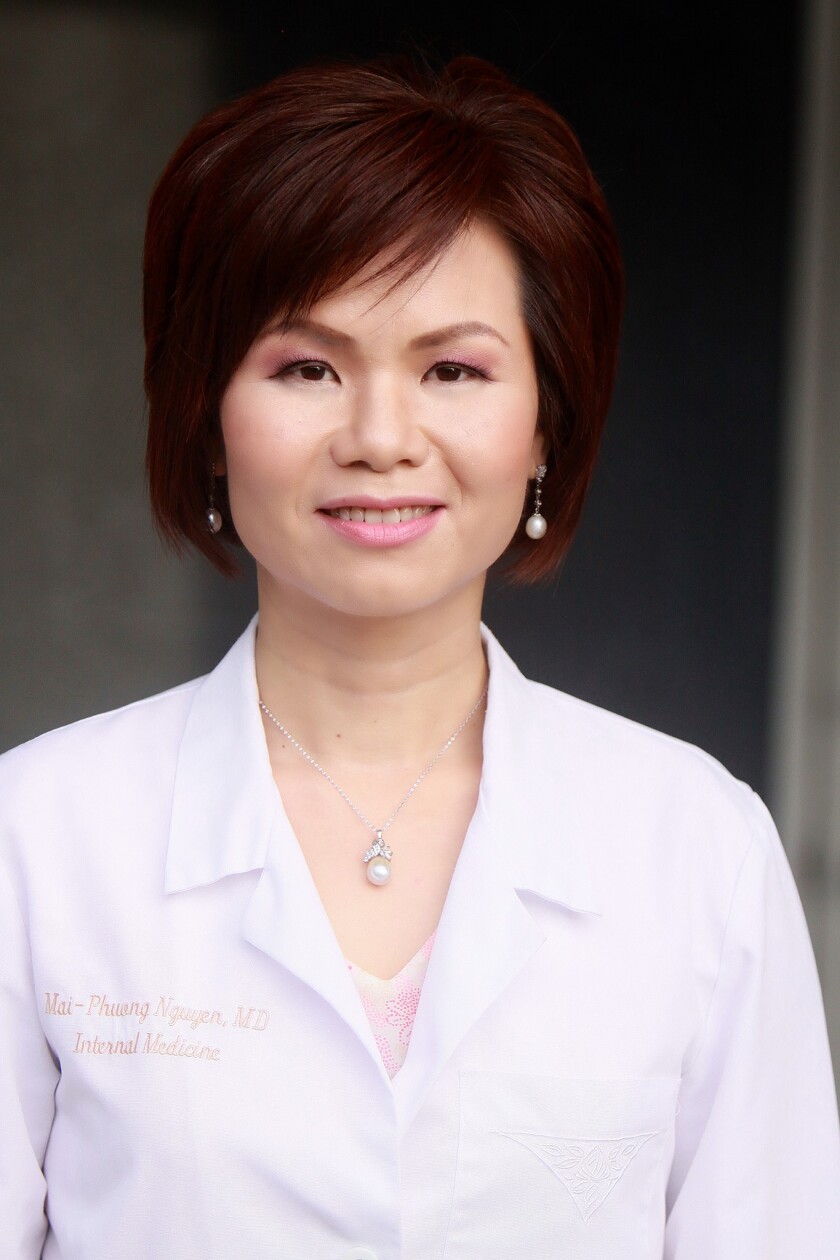
Dr. Mai-Phuong Nguyen of Huntington Beach has been championing telehealth for almost a decade.
(Courtesy of Mai-Phuong Nguyen)
Similarly, since brothers Vic and Dr. Mike H. Merjanian founded the Newport Beach-based Titan HST (Titan Health & Security Technologies Inc.) in 2012, they have had the platform to virtually connect people who need healthcare to physicians who can provide it.
But at the time, because there wasn’t yet a demand for telehealth among patients or medical providers, the Merjanians quickly pivoted to marketing it as an emergency communications system.
They partnered with school districts (including Newport-Mesa Unified), large sports venues and city governments to offer an app to use during medical emergencies.
It wasn’t until last year that they felt the general public might be ready for tMed, their new app that it not for one-off emergencies but for day-to-day checkups and consultations.
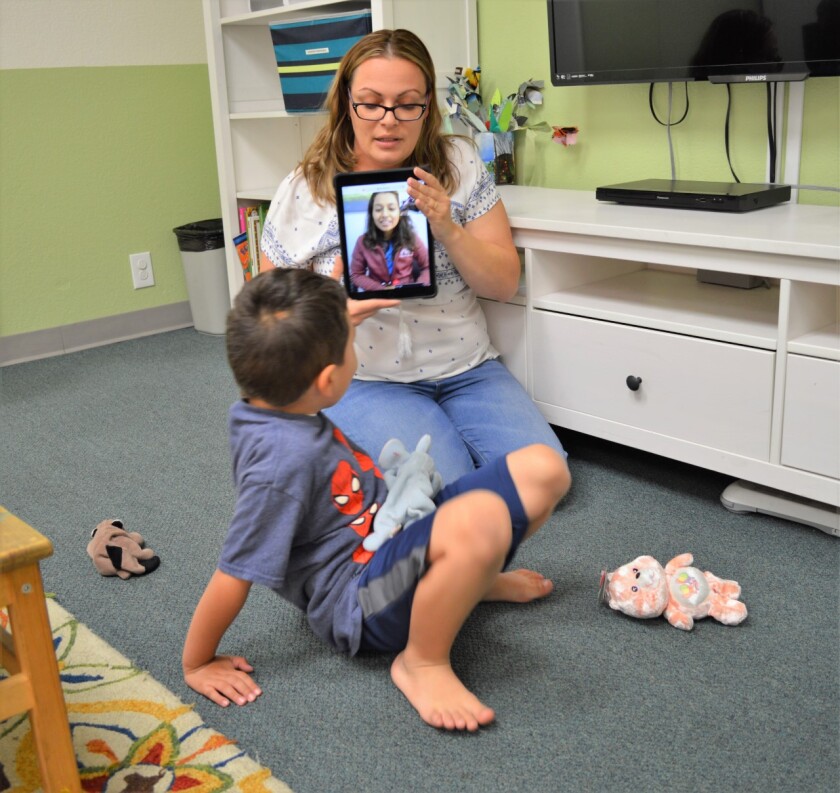
Telehealth apps like tMed 2.0 help patients correspond with their physicians from the convenience and safety of their own homes, especially important during the coronavirus crisis.
(Courtesy of Pediatric Therapy Network)
Nowadays, telehealth is a buzzword, and there are many conference like VSee’s annual Telehealth Secrets conference, where innovators in technology and medicine collide to dream up the future of healthcare.
Mai-Phuong Nguyen learned about the conference from RealTime Clinic’s Nehal Swami, who helped Nguyen build her Karuna website.
Swami remembers watching his father start a telehealth component to his practice in rural Oklahoma in the early 2000s. As a busy physician, he rarely saw his kids, and he wanted an efficient way to manage his schedule without compromising his patients’ care.
At the time, the technology wasn’t there.
“But now you can have a Tesla in space,” says Swami. “Technology isn’t an issue anymore.”
Milton Chen, co-founder of VSee, has used their telemedicine platform to connect American physicians to Syrian refugees in need of care. They’ve helped American specialists oversee complicated surgeries in Iraq, life-saving procedures that the local surgeons there would otherwise not feel comfortable doing.
“The medical field has been on the verge of a telemedicine explosion for the last couple years,” said Mike Merjanian, who works as an ER physician.
Kaiser has nurse hotlines as a preliminary screening to help determine whether a patient needs to make an in-person appointment with the doctor. Telehealth is also being used in remote areas and for homebound patients when travel is difficult and in fields like psychiatry that don’t require physical exams.
But in Orange County, these technologies often weren’t being used by the average doctor.
Until the coronavirus happened.
Dr. Vinh H. Nguyen, the medical director for MemorialCare’s Huntington Beach Health Center and MemorialCare Medical Foundation’s medical director of information systems, can pinpoint the exact day he started seeing patients over Zoom video conferencing: March 25, 2020.
Physicians at AltaMed in Huntington Beach, Mission Hospital in Mission Viejo, Hoag Orthopedic Institute in Newport Beach and the Laguna Beach Community Clinic also say that they were not regularly using telehealth — and when the Orange County health officer ordered a stop to all nonessential gatherings in mid-March, the pandemic forced their clinics to adapt almost overnight.
“Honestly, it’s been really amazing,” said Dr. Christine McLemore of AltaMed’s Huntington Beach Community Clinic. “A lot of us have wanted to do this, and there were a lot of barriers to it before.”
The barriers
For a long time, there were two main roadblocks. First, insurance didn’t cover telehealth visits, so medical providers couldn’t bill for it.
And even when insurance companies started to pay for it, there were different reimbursement rates for different medical specialties, and often the system was hard to navigate, explained Jennifer Stoll, who leads government relations and public affairs at OCHIN, a healthcare nonprofit that acquired the California Telehealth Resource Center in 2017.
Second, there were restrictions against using videoconferencing that wasn’t HIPAA-compliant in order to protect patient privacy.
In early March, the federal government loosened the regulations for telehealth, allowing insurance like Medicaid and Medicare to pay the same rate for a telehealth visit as an in-person visit. They also relaxed HIPAA restrictions, so doctors can now see their patients over more accessible platforms like the free version of Zoom and FaceTime.
Recently, McLemore estimated AltaMed does about 50% of its visits through phone and video, which means an estimated 30,000 patients were able to receive care without putting themselves or the staff at AltaMed at risk of coronavirus exposure.
And while the loosening of regulations is temporary, the hustle to develop an infrastructure to support telemedicine will have permanent effects.
OCHIN, whose mission is to level the technology playing field for low-income, vulnerable and underserved patients, has been providing technical assistance to its member clinics, many of which would otherwise be unable to afford telehealth services.
Stoll emphasizes that telehealth would be a game-changer for patients who can’t afford to take a day off work and travel for hours to get to a clinic — and others that currently may not even have access to smart phones.
“It took a crisis to redeliver healthcare, and this is an opportunity for innovation and disruption,” she said.
The Laguna Beach Health Clinic is one of the many community clinics that OCHIN has helped by getting their telehealth services up and running quickly during the COVID-19 crisis.
Started 50 years ago by volunteer physicians and activists, the Laguna Beach Health Clinic was originally a free clinic funded by the city and a “pickle jar” passed around the waiting room to collect donations, explained Dr. Jorge Rubal, who now leads their staff in serving low-income, uninsured and homeless populations in Laguna and its surrounding cities.
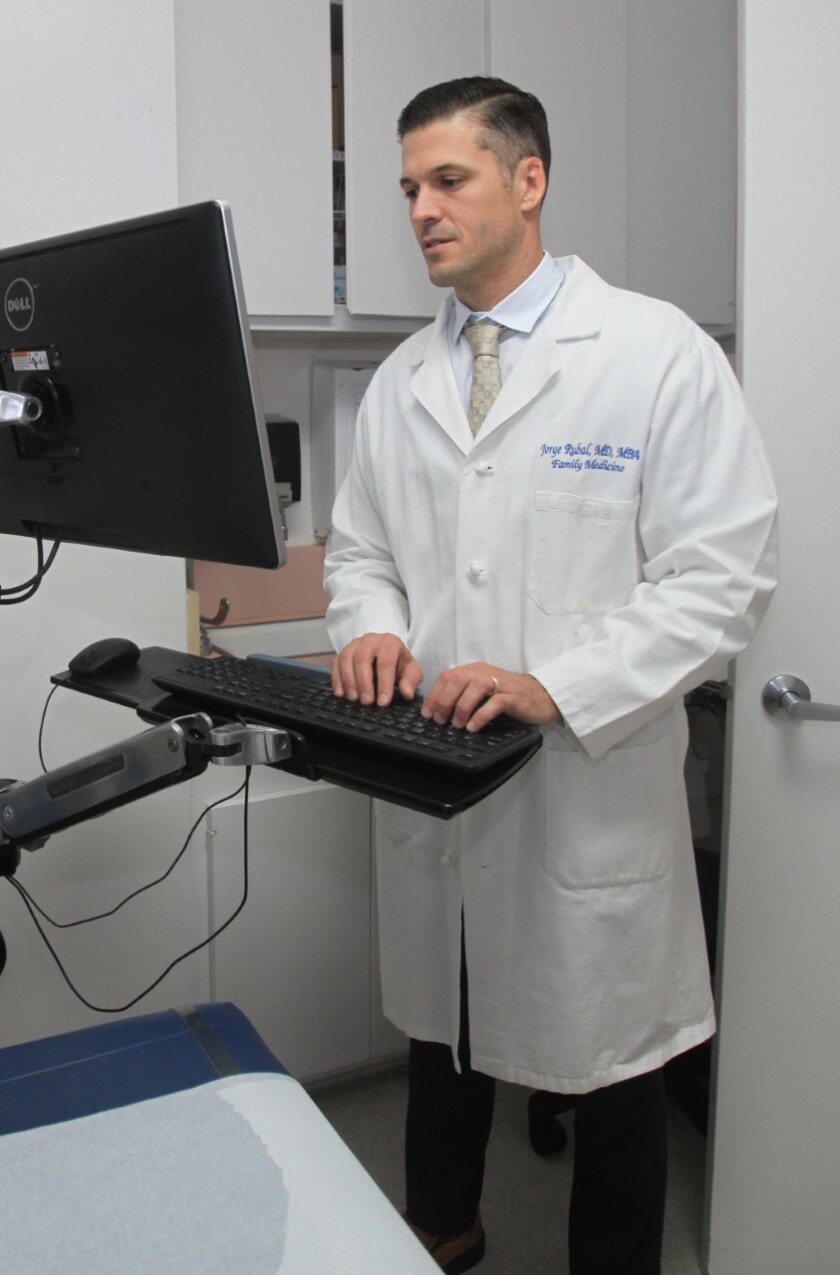
Dr. Jorge Rubal is a Family Medicine physician that serves as the CEO of the Laguna Beach Community Clinic.
(Courtesy of Laguna Beach Community Clinic)
“In crisis, you have to adapt, and when the dust settles, it’s going to change medicine, including what we can offer our patients moving forward,” Rubal said.
According to Stoll, OCHIN’s data shows that their video visits averaged fewer than 100 a month before the outbreak and increased to 2,664 in March and 6,313 in April.
Swami said that before his year, it was a hustle to even get a meeting to talk about RealTime Clinic. In these last several months, he has signed deals to work with the University of Pittsburgh Medical Center and UCSF. Mount Sinai Kravis Children’s Hospital also recently received an FCC grant to support RealTimes Clinic’s telehealth services during the pandemic.
Last week, the California Assembly unanimously passed the AB-2164 bill, which would increase support for telehealth through assistance programs and grants, for further consideration.
“As many healthcare proposals did not advance even for a hearing this session, we are thrilled by the bill’s further advancement in the legislature,” Stoll said. “It speaks to the timeliness and importance of the legislation.”
In Practice
Before Chen co-founded VSee, he got his Ph.D at Stanford researching the differences between how you build trust communicating with someone by video versus telephone versus chat.
“It’s not that one thing is better than the other,” he said. “They’re different.”
Telehealth is not meant to replace all in-person visits to the doctor, but many medical providers now hope it sticks around as an extra tool in their toolbox.
“Like everything, it’s always about quality,” said Dr. Alan Beyer, a founding partner and executive medical director of Hoag Orthopedic Institute. “If the quality doesn’t suffer and you can do just as good a job, why don’t we do it in a way that’s convenient for people?”
Beyer said he is still seeing about a third of his patients, and about a third of that third is through telehealth.
“If it’s a new patient, forget about it,” he said, of those with recent injuries. “But rechecks, if you’re a few months out from surgery, you can use a phone to show me your knee so I can see how the incision looks. I can see how the knee moves.”
“In Family Medicine, many visit types work very well with telehealth,” said MemorialCare’s Vinh H. Nguyen, “such as managing behavioral health issues, monitoring of medications for common chronic medical conditions, follow-up visits after being seen for acute conditions like infection or injury, simple skin issues, minor urgent care and lifestyle coaching.”
McLemore of AltaMed Health said telehealth has opened up new ways to care for her patients that she hasn’t been able to do before.
“Typically when we work with patients toward the end of life, usually hospice takes over and I don’t get to be involved anymore,” she said, explaining that when a patient was too sick to physically come to the clinic, she could no longer serve them.
“As a family medicine provider, a lot of times, we see you from birth through your entire life, and recently I’ve been able to be involved and help the family through end-of-life care, and that’s really special.”
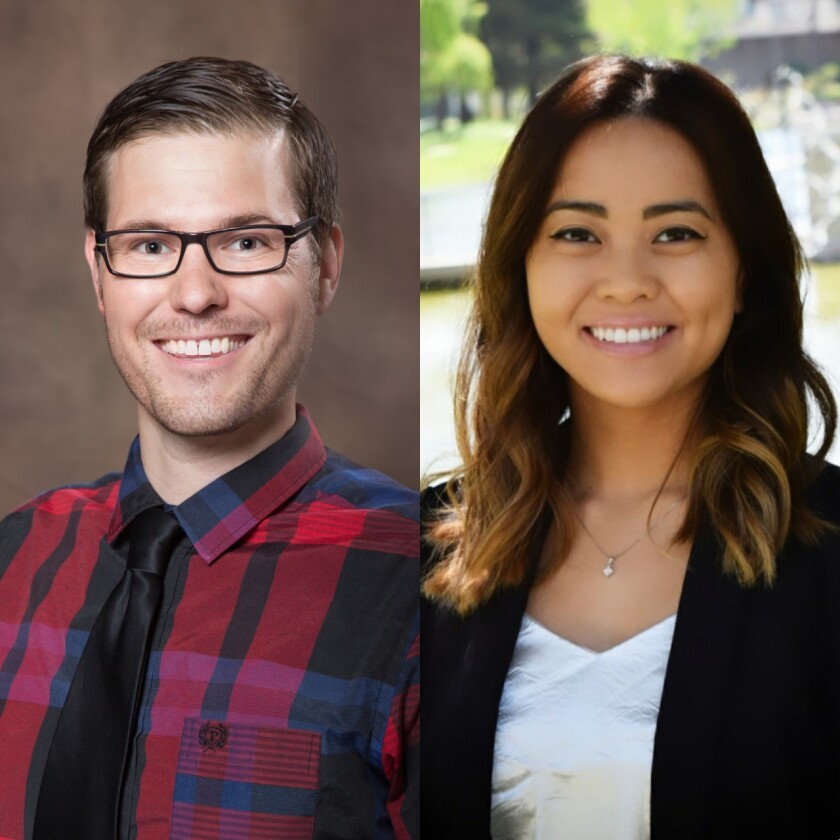
Dr. Ryan Roemer and Dr. Theresa Cao work in Mission Hospital of Mission Viejo’s ASPIRE program for adolescent mental health.
(Courtesy of Mission Hospital)
Dr. Ryan Roemer and Dr. Theresa Cao are psychologists with Mission Hospital Mission Viejo’s ASPIRE program, an adolescent after-school program for intervention and resiliency education.
Four days a week, they work with groups of about eight teenagers in sessions that they’ve had to swiftly transition to Zoom and Microsoft Teams.
While Mission Hospital has had some success with psychiatrists using telehealth for their individual sessions, managing group therapy sessions was a new experiment during the pandemic.
Cao remembered the many technical issues, though she joked that the teenagers often had suggestions on how to troubleshoot, since they were already used to using videoconferencing for school.
But it was a challenge to engage teenagers who are already easily distracted and are now not physically in the room.
“With psychology and mental health, you rely on a lot of nonverbal communications and behavioral observations,” Roemer said.
Cao still prefers in-person treatment over telehealth, but the team has been adjusting.
“On the first day, when we were done with all groups, we touched base to provide feedback, and we were like, it wasn’t as terrible as we thought it’d be,” said Cao.
What’s Next
“It’s about: How do we enable physicians to have successful online practice?” Chen said. “Not just how to do video calls, but how to be efficient in getting paid for the services, how to bring devices to patients to provide better care. And how do you do it faster?”
He said devices like blood pressure cuffs, stethoscopes and blood sugar monitors that can be left at patients’ homes to do remote monitoring are becoming less expensive. And companies like VSee have platforms that aim to recreate a similar fluidity of an in-office visit.
“Even if you take away COVID, I really do believe telemedicine is a better medicine,” Chen said. “You’ll be able to see doctor more conveniently, connect to a specialist maybe outside your driving distance.”
“It’s a social justice issue,” Vic Merjanian said. “Take a look at the elderly who have challenges with mobility, the seeing-impaired or people in rural areas with less medical access … It’s about now bringing things on the fringe to the norm and leveling the playing field for the whole country.”
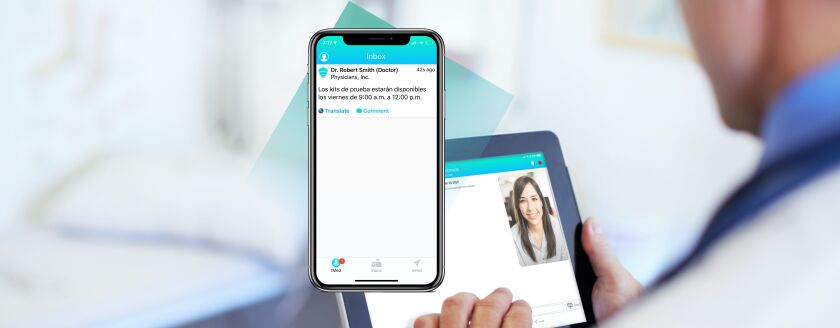
Newport Beach-based company Titan HST offers a new app, tMed 2.0, that allows patients to access doctors on-call.
(Courtesy of Titan HST)
In Titan HST’s tMed 2.0, the latest version of their app they launched this month, they have introduced their patented augmented-reality technology.
“Imagine you’re looking at yourself on the camera through our app,” Vic Merjanian said. “And it’s relaying your image back to the medical provider, who can draw on your image and show you exactly where to put the stethoscope, where to put the sensors or what angle to bend your arm … It’s like in a football game, but you draw on the screen and direct care back to your patient.”
“It’ll be interesting to see what happens when technology advances, if you can feel like you’re in a room with somebody via virtual reality, how things will change,” Roemer said.
As for Dr. Mai-Phuong Nguyen, she’s working with Swami and RealTime Clinic again to see if years later, the Little Saigon community may be more ready for telehealth services.
“Most doctors are rule-followers, not rule-breakers — that’s how we get through med school,” she said. “But this was a perfect storm, with all these people lobbying for CMS [Centers for Medicare & Medicaid Services] to get off the couch and pay us exactly the same so patients don’t have to come in and wait in a long line. It’s a no-brainer.”
“COVID will take something that may have taken 10 to 20 years to be generally adopted and shorten it to maybe this year,” Chen said.
Support our coverage by becoming a digital subscriber.
"many" - Google News
May 28, 2020 at 04:51AM
https://ift.tt/2M7wzui
The COVID-19 crisis created an urgency for telehealth. Now, many are hoping it sticks around post-pandemic - Los Angeles Times
"many" - Google News
https://ift.tt/2OYUfnl
https://ift.tt/3f9EULr
No comments:
Post a Comment